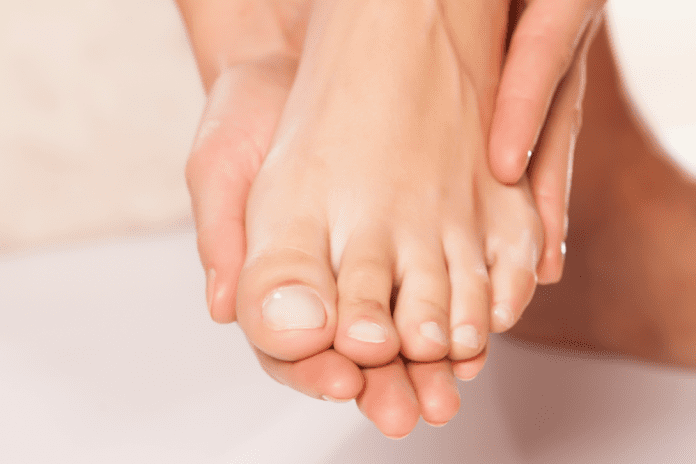Nails are a cute tough layer of protein called keratin. Besides the aesthetic value they add to the general physiology of the body, they also serve other key functions such as protection of the nail bed as well as contribute to the psychomotor mechanism of the body.
When toenails are healthy, going out to any casual meeting in sandals or an open footed shoe feels good but when they are not healthy, going out on bare foot can be very embarrassing.
Over the lifetime of a man, toenails face a number of challenges that could compromise their integrity. They face more troubles than fingernails – their color and structure are often affected. In some cases, partial or total removal of a nail might be necessary.
Some of the common nail problems are toenail fungus, athlete’s foot, black toenail, curved toenail, ingrown toenail, etc. toenail fungus is the most common toenail problem; it accounts for almost 50 percent of all nail problems. Toenail fungus starts as a spot beneath the tip of the nail and may quickly develop to cause nail discoloration, thickening, and crumbling among other symptoms.
Causes of Toenail Problems
To keep healthy toenails, it is important to know the risk factors of toenail problems. Understanding this will form the basis and motivation for proper nail care.
· Age: one of the first things that impact the outlook of nails is age. with age, nails typically get thicker and drier. Cracks then develop in the nails which allow fungus and bacteria to thrive. Also, the body’s immune system naturally gets tired or weakened with age hence reducing the body’s ability to fight off infections.
·Understanding health issues: this is one of the most serious causes of toenail problems and is a key reason to take immediate action when changes in toenails are noticed. Health problems such as diabetes weaken or suppress the body’s immune system, exposing it to fungus infection, bacteria infection, and many others.
·Injury or trauma: this ranks among the top causes of toenail problems, especially among people who use their feet extensively such as athletes. Repeated or constant hitting of the toes against hard objects exposes the toenails, particularly the big toenail, to trauma that could cause a curved toenail to curve and grow into the adjacent skin – situations called curved toenails and ingrown toenails. Similarly, dropping heavy objects on the toes could cause curved or ingrown toenails among other problems.
·Ill-fitted shoes: wearing ill-fitted shoes is a leading cause of toenail injuries. Squeezing the toes in a shoe could cause the toenails to curve and grow into the surrounding skin or nail bed.
·Improper cutting of nails: this is a problem common to most people. More often than not, we round the edges of the nail when cutting it rather than cut it straight across. This could encourage the nail to curve resulting in curved toenails or ingrown toenails situation. Also, cutting the nails too short could cause them to grow into the nail bed.
·Walking barefoot in public places: public spaces such as a locker room or a community swimming pool are breeding grounds for infections such as toenail fungus. walking barefoot in these places exposes the nails to fungus infection.
·Sharing pedicure or manicure tools: nail tools are personal things; not to be shared. If you share your nail tools with someone that has fungus then you are at a very high risk of having the same because they spread quickly and easily.
·Diet: the inadequate proportion of certain nutrients affects the growth of toenails. Also, this contributes to a weaker immune system hence exposing the body to infections.
·Improper nail hygiene: dirty and long nails easily harbor all kinds of microorganisms that could compromise the health of nails.
·Sweaty foot: nail fungus thrives in a moist and warm environment hence sweaty foot presents a very key ingredient for the growth of nail fungus.
·Artificial nails or nail polish: artificial nails as well as most traditional nail polishes have toxic ingredients that could compromise the health of nails.
·Genetics or family history: people with a family history of toenail problems such as toenail fungus are at a higher risk.
·History of toe problems: people who have had previous cases of toenail problems are more likely to have it again.
How to keep healthy nails
Don’t share nail tools and disinfect them properly after each use because of the ease and speed with which some nail problems spread.
·Treat underlying health issues promptly: once you see the signs of an underlying health issue, visit a physician for proper diagnosis, and begin treatments immediately if confirmed. This will not just help you keep healthy nails but also live a high quality of life.
·Moisturize: moisturize your nails frequently to avoid excessive dryness of nails. Older people should do this more frequently.
·Use organic or antifungal nail polish: nail polishes with fewer toxic chemicals do lesser harm to nails. Better still, you should use antifungal nail polishes that are made to prevent or fight nail fungus.
·Take an immune-boosting supplement: to enhance the body’s ability to fight infection especially in old people and people with underlying health issues, supplements that boost immunity are vital.
·Do not walk barefoot in public spaces such as a locker or community swimming pool.
·Keep toenails clean and dry.
·While the toenails should be kept short, avoid cutting them too short.
·Pay attention to the color and structure of your toenails in order to notice any change very early.
·Lifestyle change: this is very fundamental to keeping healthy nails especially for people with family or history of toenail problems. Keep toenails clean and dry as well as eat necessary nutrients.
Nails generally face several problems but toenails are more vulnerable. They suffer at least twice as much as fingernails. Keeping them healthy begins with paying attention to them. Then you have to understand what the potential problems are and how to prevent them. Key problems are listed above and are followed by the prevention or solution methods.






